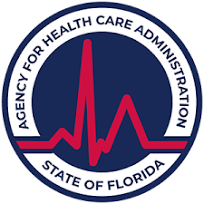The holiday season can be a time of joy and celebration for many people. Still, for those who struggle with anxiety and depression, it can also be a difficult and overwhelming time. As per research, 3.1% of the US population, or 6.8 million adults, is suffering from anxiety, and around
7.1% of adults have a major depressive disorder.
When the days get shorter, and the temperature gets chilly, most individuals feel depressed, tired, and disinterested in their daily lives. Such emotions or feelings could be “holiday blues” or fatigue. However, highly severe seasonal depression, which emerges and disappears, could be a medical illness called a seasonal affective disorder, or SAD.
Although they have certain similarities, they are distinct illnesses. The main distinction is due to seasonal trends. For example, holiday blues are sad feelings that last throughout the holiday season, particularly during November (Thanksgiving) and December (Christmas and Hanukkah). On the other hand, SAD is a type of severe depressive disorder that happens in seasonal changes at certain months.
Anxiety or depression during the holidays could be the most challenging time of year for specific individuals. If you’re dealing with either of these disorders, these physical and emotional exercises will assist you in rediscovering clarity and boosting your mental well-being when feelings of inadequacy and high pressures become overwhelming.
Symptoms of Depression and Anxiety
Studies have shown that rates of depression and anxiety increase significantly during the holiday season, with symptoms such as:
- Increased sadness
- Hopelessness
- Loss of interest in activities
- Fatigue
- Suicidal thoughts
- Feeling of guilt
- Sleep disturbances
- Isolating oneself
- Shakiness
- Tightness in the chest
Coping with anxiety and depression can be challenging. While dealing with the signs of a mental illness, an individual may resort to unhealthy coping techniques such as drinking and drug usage. However, Augustine recovery lays the road for a lifetime of sustainable recovery by assisting men and women in overcoming cases of dual diagnosis. So, seeking professional help from a dual-diagnosis treatment center is an excellent option if these symptoms persist for more than two weeks.
How can physical exercise reduce anxiety?
Boosts your mood by diverting your brain
- Decreases muscle tension
- Promotes the release of endorphins, the “feel good hormone.”
- Creates better and more restful sleep
- It makes serotonin and GABA available (“happy” brain chemicals)
- Elevates heart rates which changes brain chemicals
- Activates frontal brain activity
Physical And Mental Exercises for Anxiety and Depression
Deep breathing exercises
Deep breathing involves taking slow, deep breaths from the abdomen rather than shallow breaths from the chest. This type of breathing can help to calm the body and mind and can be particularly effective for those experiencing a panic attack or other acute anxiety episodes. A study found that deep breathing exercises effectively reduced anxiety and improved quality of life
Mindfulness and meditation
Mindfulness and meditation involve focusing on the present moment and letting go of negative thoughts and worries. It can help to calm the mind and reduce anxiety. An American Journal of Psychiatry study found that mindfulness-based therapy effectively reduced stress and improved overall well-being.
Stay active and get outdoors.
Regular physical activity can help reduce the symptoms of anxiety and depression. It is because physical activity can help release endorphins, chemicals in the brain that can improve your mood. In addition, going outdoors and spending time in nature can positively affect mental
health, reduce stress, and improve overall well-being.
Indulge yourself in different activities like dancing, yoga, walking, weightlifting, swimming, resistance training, etc. Participating in these activities can provide a sense of accomplishment and boost self-esteem, which can also help to alleviate symptoms of anxiety and depression
Consider Volunteering Throughout the Holiday Season
Volunteering during the holiday season can be a beneficial way for individuals dealing with anxiety and depression to take their minds off their struggles and focus on helping others. It can provide a sense of purpose and fulfillment, and the social interaction involved in volunteering can also help to improve mood. In addition, volunteering can give a break from daily routines.
Practice positive self-talk
Individuals suffering from anxiety or depression may benefit from practicing positive self-talk to reduce negative thoughts and feelings. When we engage in negative self-talk, we often focus on our shortcomings and inability to cope with challenges, making us feel inadequate and overwhelmed. In contrast, positive self-talk involves talking to ourselves in a supportive and encouraging way and can help us to reframe our thoughts and beliefs in a more positive light.
Assess relationships and set boundaries
You can better understand which relationships in your life are healthy and supportive and which may contribute to your anxiety and depression by examining the relationships in your life. Set boundaries to maintain your emotional well-being and avoid becoming burned out.
Setting boundaries might include saying “no” to individuals and situations that are toxic for you. It can enable you to avoid taking on too much and being overwhelmed, leading to anxiety and sadness.
Reach out to loved ones
Reaching out to loved ones can provide support and comfort during difficult times. By talking about feelings and concerns, individuals can find relief and know they are not alone. If you’re feeling overwhelmed by anxiety or depression, it can be helpful to talk to a professional therapist or counselor.
If you or someone you know is in crisis and needs immediate help, you can contact the National Suicide Prevention Lifeline by calling 1-800-273-8255. Alternatively, you can call 988 to be connected to the Suicide & Crisis Lifeline. These services are available 24/7 and are free and confidential.
Help for Dual Diagnosis Problem
An individual with a dual diagnosis has both a mental health disorder and a substance abuse disorder. The two conditions can exacerbate one another, making it difficult to manage symptoms for someone suffering from both disorders. However, with proper dual diagnosis treatment, individuals can effectively achieve long-term recovery and lead fulfilling lives. Dual-diagnosis treatment programs typically involve a combination of therapy, medication, and support from peers and professionals to help individuals with this condition learn coping skills and develop strategies to manage their symptoms.
If you are suffering from anxiety and depression, Augustine Recovery has designed a beautiful, tranquil retreat where you can begin your journey to recovery. By addressing both conditions simultaneously, we can provide our clients with the support and care to achieve lasting recovery.
Contact us today if you’re interested in learning more about the dual-diagnosis treatment we offer in Florida.
Relevant Links
https://www.ncbi.nlm.nih.gov/pmc/articles/PMC5455070/







